
Press Release
UNAIDS names Swiss tennis player Timea Bacsinszky as Global Advocate for Young People
11 July 2016 11 July 2016GENEVA/GSTAAD, 11 July 2016—UNAIDS has appointed Swiss tennis player Timea Bacsinszky as a Global Advocate for Young People. The announcement was made during the Women’s Tennis Association Ladies Championship Gstaad, taking place in Gstaad, Switzerland, from 9 to 17 July.
In her new role, Ms Bacsinszky will work to ensure that young people have access to the information and services needed to protect themselves from becoming infected with HIV and will encourage young people to get tested for the virus and seek immediate treatment if necessary to keep them alive and well.
“My generation has never known a world without HIV, but we have the power to change this for future generations,” said Ms Bacsinszky. “Ending the AIDS epidemic by 2030 will require commitment and perseverance to get the job done and this will only happen if we break down the stigma that still surrounds HIV.”
Ms Bacsinszky is supporting the UNAIDS #ProTESTHIV campaign, which encourages young people to become actively involved in promoting HIV testing and linkage to care and treatment services. People can find more information at protesthiv.org.
“Timea Bacsinszky’s energy and dedication on the tennis court are very clear,” said Michel Sidibé, Executive Director of UNAIDS. “These are valuable qualities that will help to mobilize young people to join the global movement in response to HIV and become the generation to end the AIDS epidemic by 2030.”
There are 36.7 million people living with HIV globally, 3.9 million of whom are young people aged 15 to 24. Young people are especially vulnerable to HIV infection. In 2015, there were an estimated 670 000 new HIV infections worldwide among young people aged 15 to 24, with young women accounting for 58% of new infections among this age group.
UNAIDS is the main charitable beneficiary of the Women’s Tennis Association Ladies Championship Gstaad in 2016.
UNAIDS
The Joint United Nations Programme on HIV/AIDS (UNAIDS) leads and inspires the world to achieve its shared vision of zero new HIV infections, zero discrimination and zero AIDS-related deaths. UNAIDS unites the efforts of 11 UN organizations—UNHCR, UNICEF, WFP, UNDP, UNFPA, UNODC, UN Women, ILO, UNESCO, WHO and the World Bank—and works closely with global and national partners towards ending the AIDS epidemic by 2030 as part of the Sustainable Development Goals. Learn more at unaids.org and connect with us on Facebook, Twitter, Instagram and YouTube.
Press centre
Download the printable version (PDF)

Press Release
UNAIDS Board underlines the need for accelerated action and increased investment to end the AIDS epidemic by 2030
01 July 2016 01 July 2016GENEVA, 1 July 2016—At its 38th meeting, the UNAIDS Programme Coordinating Board has stressed the need for accelerated action, increased investment, intensified partnerships and innovation in community-led service delivery to end the AIDS epidemic by 2030.
The meeting took place just weeks after the adoption by United Nations Member States of a new Political Declaration on Ending AIDS, which called on countries to Fast-Track their response to HIV over the coming years to reach a set of measurable targets by 2020. Achieving these targets is critical to putting the world on course to end AIDS as a public health threat by 2030.
In his opening address, the Executive Director of UNAIDS, Michel Sidibé, described the Political Declaration agreed in New York as bold, ambitious, forward-looking and balanced. He said success in reaching the Political Declaration’s targets required an inclusive approach that left no one behind, respect for everyone’s right to access quality sexual and reproductive health and rights, innovative and appropriate implementation of programmes and services to meet the needs of variously affected regions and key populations and increased and front-loaded investments for the AIDS response.
“The commitment to ending the AIDS epidemic by 2030 must be underpinned by the full respect for people’s human rights, including their access to quality sexual and reproductive health and rights,” said Mr Sidibé. “The involvement of people living with and affected by the epidemic is essential in implementing an effective and fully funded response rooted in the community and in ensuring a strong interface between service providers and people most affected by HIV.”
The Board also approved a revised Unified Budget, Results and Accountability Framework (UBRAF) for 2016–2021 and emphasized the importance of the Joint Programme in translating the UNAIDS 2016–2021 Strategy into action at the national, regional and global levels. However, there remains a shortfall of 30% in 2016 between funding commitments made to date and the resources required to fully implement the Strategy in support of people living with or affected by HIV. The Board encouraged donor governments to make multi-year contributions towards the 2016–2021 UBRAF and urged UNAIDS to continue expanding its donor base. During the meeting, the United States of America announced it intended to extend its agreement with UNAIDS for an additional five years, and as part of this extension, intended to further its funding collaboration with UNAIDS.
During the dedicated thematic day, the Board further explored the key role of communities in ending AIDS by 2030, with governments urged to leverage the skills, knowledge and experience of civil society to maximize impact. There was broad consensus that there would be no end to the AIDS epidemic by 2030 without sustained and intensified investment in community-led responses to the epidemic in regions and among groups of people most affected, including sex workers, gay men and other men who have sex with men, people who inject drugs, transgender people and prisoners.
Representatives of Member States, international organizations, civil society and nongovernmental organizations attended the meeting, which was chaired by Switzerland. Ghana served as Vice-Chair and Ecuador as Rapporteur.
The UNAIDS Executive Director’s report to the Board and the Board’s decisions can be found at unaids.org.
UNAIDS
The Joint United Nations Programme on HIV/AIDS (UNAIDS) leads and inspires the world to achieve its shared vision of zero new HIV infections, zero discrimination and zero AIDS-related deaths. UNAIDS unites the efforts of 11 UN organizations—UNHCR, UNICEF, WFP, UNDP, UNFPA, UNODC, UN Women, ILO, UNESCO, WHO and the World Bank—and works closely with global and national partners towards ending the AIDS epidemic by 2030 as part of the Sustainable Development Goals. Learn more at unaids.org and connect with us on Facebook, Twitter, Instagram and YouTube.
38th meeting
Press centre
Download the printable version (PDF)



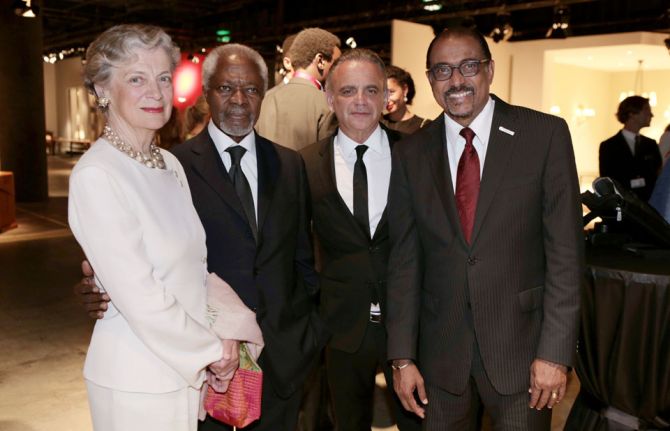
Press Release
UNAIDS presents Kofi Annan with prestigious Award for Leadership
13 June 2016 13 June 2016Former United Nations Secretary-General recognized for his outstanding and remarkable contributions to the AIDS response
GENEVA, 13 June 2016—UNAIDS has honoured former United Nations Secretary-General Kofi Annan with the UNAIDS Award for Leadership in recognition of the outstanding and remarkable contributions he has made to the global response to HIV. Mr Annan was presented with the award by the Executive Director of UNAIDS, Michel Sidibé, at the 2016 UNAIDS fundraising gala, held in Basel, Switzerland.
“On behalf of UNAIDS I would like to recognize all you have done and continue to do to restore the dignity and improve the lives of people around the world,” said Mr Sidibé. “You have helped to build a fairer, more peaceful world.”
When Mr Annan began his tenure as the new United Nations Secretary-General in 1997, the outlook for the AIDS epidemic was bleak. Some 23.9 million [21.7 million–26.6 million] people were living with HIV, there were 3.5 million [3.2 million–3.8 million] new HIV infections and 1.1 million [890 000–1.3 million] AIDS-related deaths, and access to life-saving treatment was only available to a privileged few.
The response that ensued changed the course of history. Under his leadership, in 2000 the United Nations Security Council adopted resolution 1308, identifying AIDS as a threat to global security. In 2001, Mr Annan held the first United Nations General Assembly Special Session on HIV/AIDS and called for a global fund and “war chest” to respond to HIV and other infectious diseases. His call led to the creation of the Global Fund to Fight AIDS, Tuberculosis and Malaria, which today is supporting 8.6 million of the 17 million people who are accessing antiretroviral treatment.
Mr Annan’s efforts to improve the lives of people living with and affected by HIV have been instrumental in driving down the numbers of new HIV infections, which have declined by 40%, and in increasing the number of people on treatment from just a few thousand to more than 17 million in 2015. However, less than half of all people in need of treatment have access and new HIV infections are increasing in some parts of the world.
“Today we see tremendous progress, but the fight is not over,” said Mr Annan. “We must continue the struggle and wake up each morning ready to fight and fight again, until we win.”
2016 UNAIDS LEADERSHIP AWARD
The UNAIDS Award for Leadership recognizes a person or an organization that has made a major and lasting contribution to restoring dignity and improving people’s lives. UNAIDS recognizes the key role leadership plays in creating an environment for positive social change and accelerating progress in the AIDS response and beyond.
UNAIDS
The Joint United Nations Programme on HIV/AIDS (UNAIDS) leads and inspires the world to achieve its shared vision of zero new HIV infections, zero discrimination and zero AIDS-related deaths. UNAIDS unites the efforts of 11 UN organizations—UNHCR, UNICEF, WFP, UNDP, UNFPA, UNODC, UN Women, ILO, UNESCO, WHO and the World Bank—and works closely with global and national partners towards ending the AIDS epidemic by 2030 as part of the Sustainable Development Goals. Learn more at unaids.org and connect with us on Facebook, Twitter, Instagram and YouTube.
Press centre
Download the printable version (PDF)

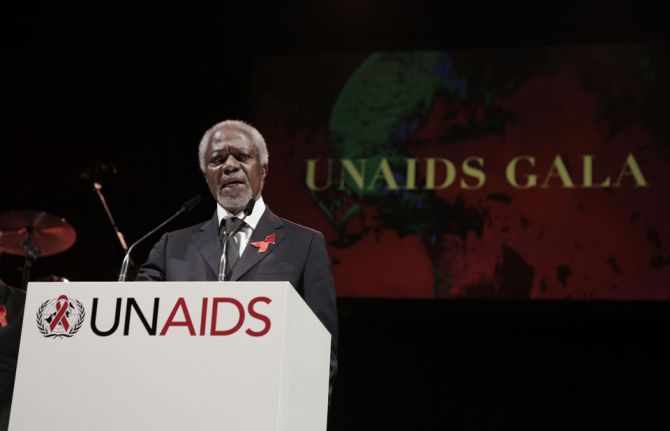


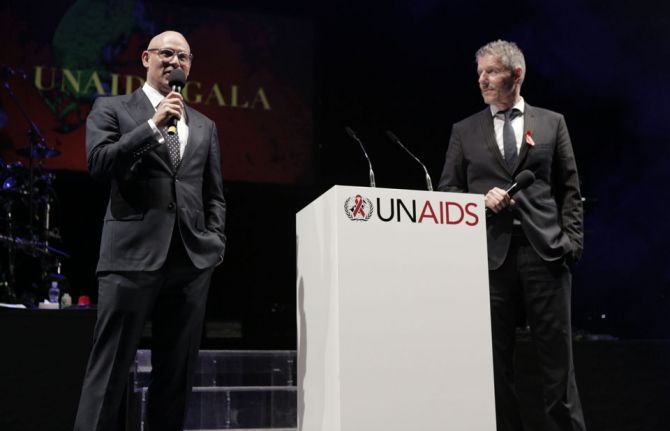




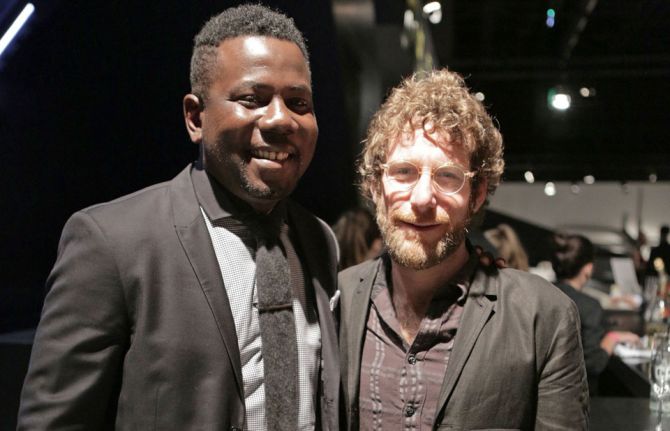

Press Release
UNAIDS gala honours former United Nations Secretary-General Kofi Annan and raises more than US$ 1 million for UNAIDS
15 June 2016 15 June 2016Held for the first time during Art Basel week, the evening at Design Miami/Basel featured reading by Keanu Reeves and Alexandra Grant and live music by Duran Duran
BASEL/GENEVA, 15 June 2016—Supporters of UNAIDS attended its annual fundraising gala on 13 June. Held at Design Miami/Basel on the eve of the Art Basel art festival, the gala raised more than US$ 1 million to support the work of UNAIDS to increase access to HIV prevention and treatment services worldwide, particularly for women and children.
The evening was held in honour of former United Nations Secretary-General Kofi Annan, who was presented with the UNAIDS Award for Leadership in recognition of his outstanding and remarkable contributions made to the global response to HIV.
“On behalf of UNAIDS, I would like to thank the former United Nations Secretary-General for all he has done and continues to do to restore the dignity and improve the lives of people everywhere,” said Michel Sidibé, Executive Director of UNAIDS. “We shall endeavour to continue to make history and achieve an AIDS-free generation by ensuring that no one is left behind or excluded from life-saving HIV services.”
The gala was hosted by Her Royal Highness Princess Eugenie of York, Caroline Rupert and two of Nelson Mandela’s grandsons, Kweku and Ndaba, who welcomed more than 600 international guests from the worlds of art, design, architecture, fashion, film and music.
Red carpet arrivals of celebrities, fashion icons and renowned art and cultural influencers included Alexandra Grant, Peter Brant, Duran Duran, Vera Brezhneva, Keanu Reeves, Dustin Yellin, Thabo Sefolosha, Goga Ashkenazi and many more. The gala was sponsored by Cartier and the Hotel InterContinental Geneva, with the support of Design Miami, and was produced by Josh Wood Productions.
The evening began with an exclusive vernissage of Design Miami Basel, showcasing work from some of the world’s most important collectible designers of the 20th and 21st centuries.
After the reception and preview, Her Royal Highness Princess Eugenie of York and Caroline Rupert welcomed guests and introduced the theme of the evening. The dinner included a reading of “Shadows” by Keanu Reeves and Alexandra Grant. Auctioneer Simon de Pury opened a live auction, with lots from designers that included Alaia, Cartier, Daniel Libeskind and Humberto and Fernando Campana.
The gala concluded with a special live musical performance by Duran Duran, who entertained guests with their signature sounds and famous hits. DJ Bas Ibellini took to the stage for the after-party to close the evening.
UNAIDS
The Joint United Nations Programme on HIV/AIDS (UNAIDS) leads and inspires the world to achieve its shared vision of zero new HIV infections, zero discrimination and zero AIDS-related deaths. UNAIDS unites the efforts of 11 UN organizations—UNHCR, UNICEF, WFP, UNDP, UNFPA, UNODC, UN Women, ILO, UNESCO, WHO and the World Bank—and works closely with global and national partners towards ending the AIDS epidemic by 2030 as part of the Sustainable Development Goals. Learn more at unaids.org and connect with us on Facebook, Twitter, Instagram and YouTube.
Contact
Blue MediumMathilde Campergue
tel. +1 212 675 1800
Mathilde@bluemedium.com
Blue Medium
Michael Lawrence
tel. +1 212 675 1800
Michael@bluemedium.com
Press centre
Download the printable version (PDF)

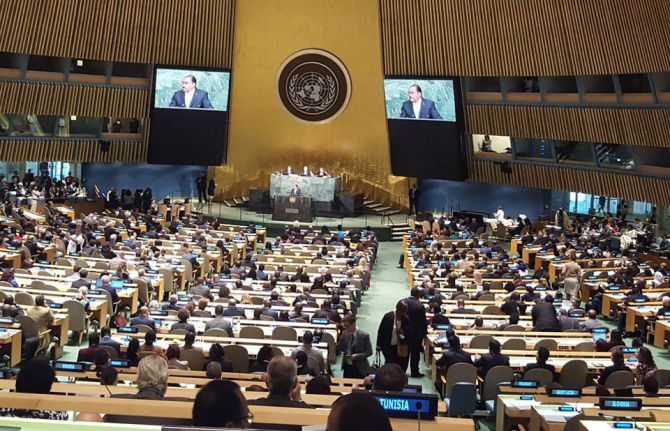
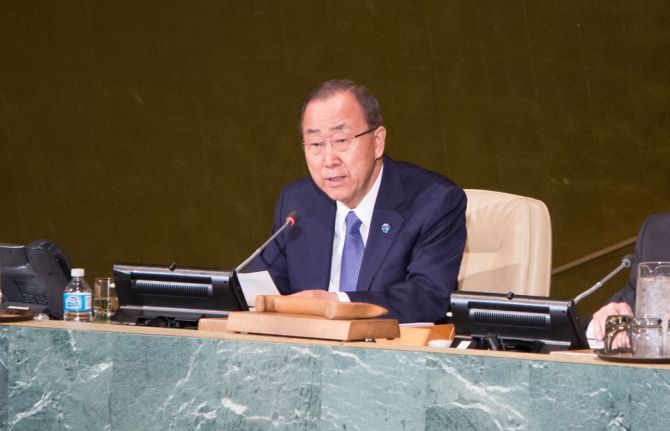
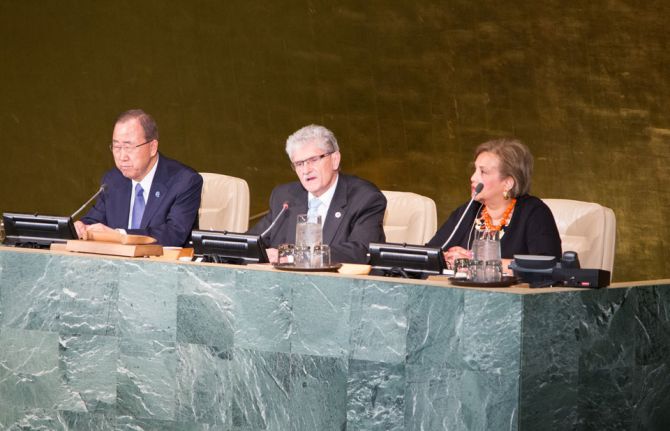


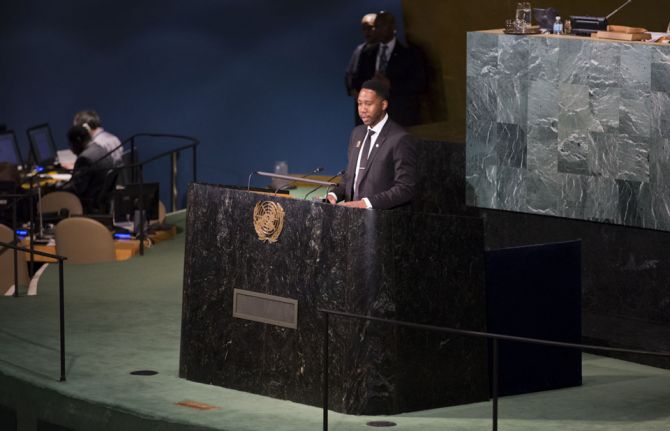
Press Release
Bold new Political Declaration on Ending AIDS adopted in New York
08 June 2016 08 June 2016United Nations Member States agree to reach ambitious new targets by 2020, pledging to leave no one behind and end the AIDS epidemic as a public health threat by 2030
UNITED NATIONS, NEW YORK, 8 June 2016—A progressive, new and actionable Political Declaration on Ending AIDS has today been adopted by Member States at the United Nations General Assembly High-Level Meeting on Ending AIDS, taking place in New York, United States of America. The Political Declaration includes a set of specific, time-bound targets that must be reached by 2020 to end the AIDS epidemic by 2030 within the framework of the Sustainable Development Goals.
Heads of State and Government, ministers, people living with HIV, representatives of civil society, international organizations, the private sector, scientists and researchers have gathered at the High-Level Meeting on Ending AIDS to build on the commitments made in the Political Declaration and to set the world on course to end the AIDS epidemic as a public health threat by 2030.
“The global community is united in its resolve to end the AIDS epidemic within the framework of the Sustainable Development Goals,” said the President of the United Nations General Assembly, Mogens Lykketoft. “This meeting is laying the groundwork for future progress in creating healthier outcomes for everybody affected by HIV and building stronger societies prepared for future challenges.”
“The world has an opportunity to end an epidemic that has defined public health for a generation,” said the Executive Director of UNAIDS, Michel Sidibé. “The decisions made here, including the commitment to zero new HIV infections, zero AIDS-related deaths and zero discrimination, will provide the springboard for the implementation of an innovative, evidence-informed and socially just agenda that will end the AIDS epidemic by 2030.”
Remarkable progress has been made in the response to HIV since the last United Nations General Assembly Meeting on HIV and AIDS, in 2011. By December 2015, 17 million people were accessing antiretroviral medicines and new HIV infections among children and AIDS-related deaths have been considerably reduced. There has also been progress in reducing tuberculosis deaths among people living with HIV.
However, the number of new HIV infections among adults has remained almost static since 2010 and too many people are being left behind in the response, including young women and girls and specific groups of people, including sex workers, prisoners, gay men and other men who have sex with men, transgender people and people who inject drugs.
The High-Level Meeting on Ending AIDS will focus attention on the importance of a Fast-Track approach to HIV over the next five years to set the world on course to end the AIDS epidemic. The UNAIDS Fast-Track approach to ending the AIDS epidemic has a set of time-bound targets, including reducing the number of people newly infected with HIV from 2.1 million [1.8 million–2.4 million] in 2015 to fewer than 500 000 in 2020, reducing the number of people dying from AIDS-related illnesses from 1.1 million [940 000–1.3 million] in 2015 to fewer than 500 000 in 2020 and eliminating HIV-related discrimination.
The participants will take part in a series of discussions and events throughout the High-Level Meeting on Ending AIDS to discuss how to transform the Political Declaration into concerted action through scientific innovation, financial sustainability, ending stigma and discrimination and creating socially just, resilient and inclusive societies that leave no one behind.
There will be a series of panel discussions and side events, including on leveraging the end of AIDS for social transformation and sustainable development, financing and sustaining the end of AIDS and stopping new HIV infections. UNAIDS will launch a report on the remarkable progress made in stopping new HIV infections among children. UNAIDS has also announced, together with the World Health Organization and partners, that a further three countries—including Thailand, which at the peak of the epidemic had more than 3000 new infections among children per year—have eliminated new HIV infections among children.
Other events include a youth pre-meeting and an interfaith service. The High-Level Meeting on Ending AIDS will also include an innovations marketplace that will showcase new technologies and tools in the area of health and HIV. On Monday, 6 June, the Mayor of New York, Bill de Blasio, hosted an event on Fast-Track cities at the New York City Public Library that underscored the key role that cities are playing in ending the AIDS epidemic.
The United Nations General Assembly Meeting on Ending AIDS is convened by the President of the United Nations General Assembly and co-facilitated by Switzerland and Zambia.
UNAIDS
The Joint United Nations Programme on HIV/AIDS (UNAIDS) leads and inspires the world to achieve its shared vision of zero new HIV infections, zero discrimination and zero AIDS-related deaths. UNAIDS unites the efforts of 11 UN organizations—UNHCR, UNICEF, WFP, UNDP, UNFPA, UNODC, UN Women, ILO, UNESCO, WHO and the World Bank—and works closely with global and national partners towards ending the AIDS epidemic by 2030 as part of the Sustainable Development Goals. Learn more at unaids.org and connect with us on Facebook, Twitter, Instagram and YouTube.
Contact
Office of the President of the General AssemblyUlla Oestergaard
tel. +1 646 388 3080
oestergaard@un.org
UNAIDS
Sophie Barton-Knott
tel. +41 79 514 6896
bartonknotts@unaids.org
UNAIDS
Michael Hollingdale
tel. +41 79 500 2119
hollingdalem@unaids.org
UN Department of Public Information
Francyne Harrigan
tel. +1 917 367 5414
harriganf@un.org
Press centre
Download the printable version (PDF)

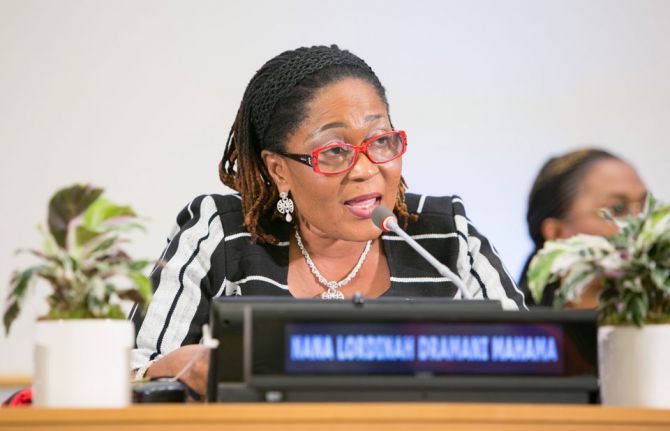
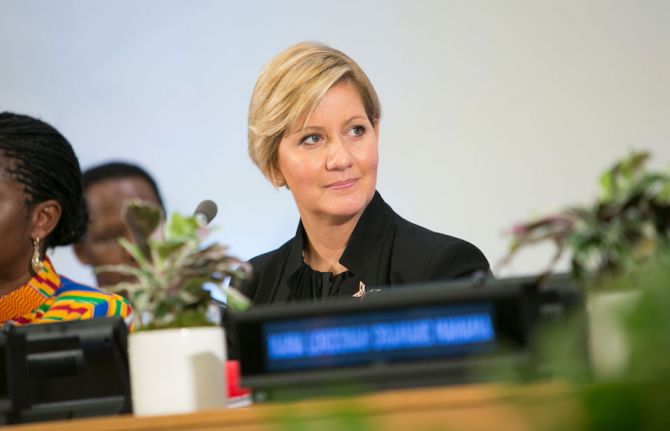





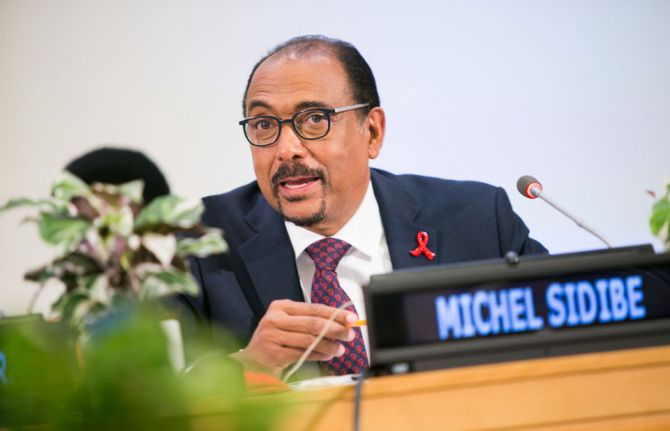
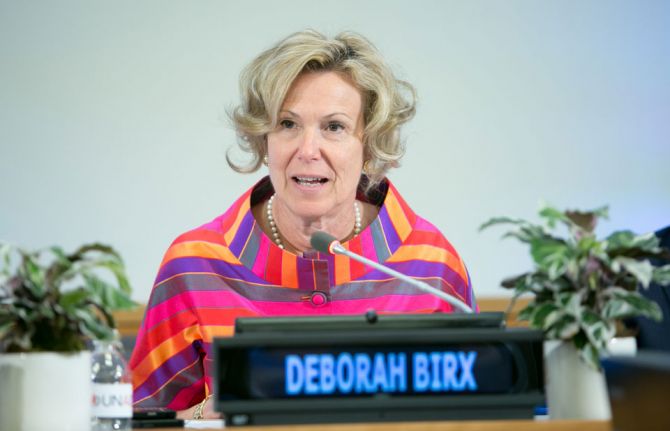
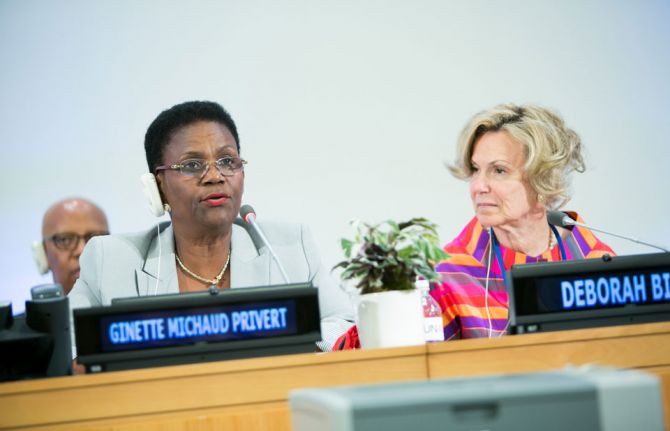
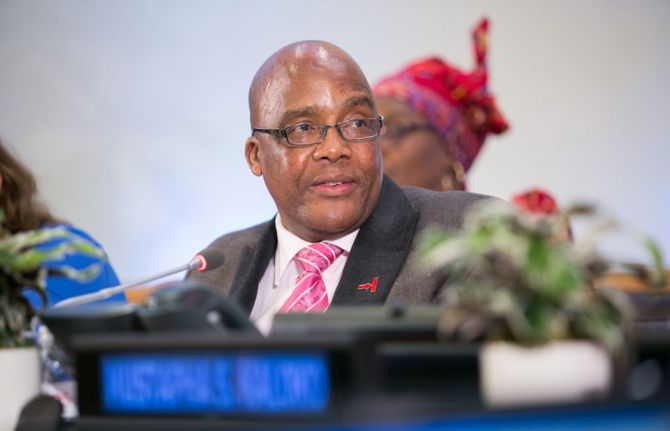
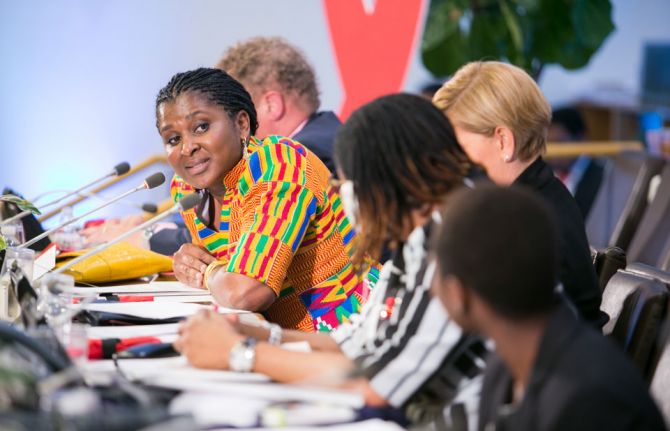
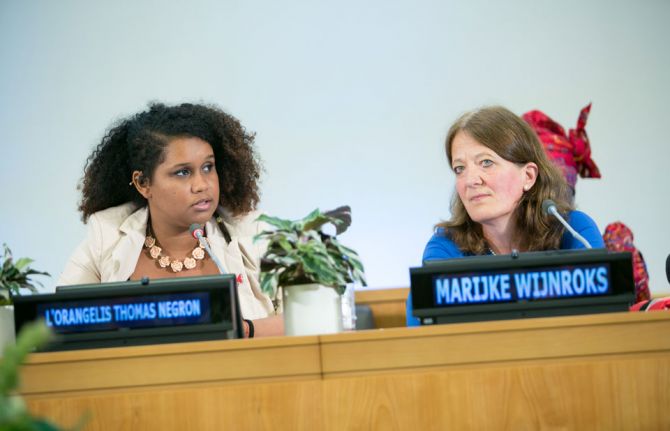
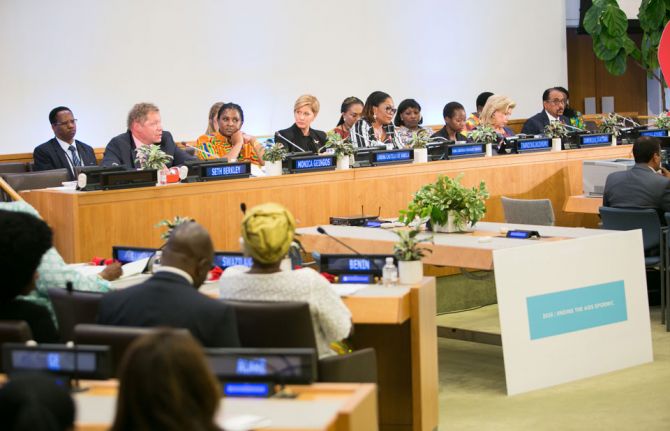


Press Release
Breaking the silos: empowering adolescent girls and young women to access integrated health-care services
09 June 2016 09 June 2016NEW YORK/GENEVA, 9 June 2016—At the United Nations General Assembly High-Level Meeting on Ending AIDS, taking place in New York, United States of America, the Organisation of African First Ladies against HIV/AIDS (OAFLA) has called for the stronger integration of services to improve health outcomes among adolescent girls and young women.
First Ladies from Africa were joined by the First Lady of Haiti and the First Lady of Panama in calling for the empowerment of young women and adolescent girls in the AIDS response. The First Ladies said adolescent girls must assume leadership roles to ensure the development of programmes and policies that are appropriate to their needs and fully respect their sexual and reproductive health and rights. They urged providers of health-care services to better integrate service delivery and programme design to support the ability of adolescent girls and young women to make informed life choices and keep themselves healthy, including by protecting themselves from HIV infection.
Globally, AIDS-related illnesses remain the leading cause of death among women of reproductive age. In 2015, there were an estimated 250 000 [180 000–340 000] new HIV infections worldwide among adolescents (aged 15–19 years), with adolescent girls accounting for 65% of new HIV infections among this age group. AIDS-related illnesses are estimated to be the leading cause of death among adolescents in sub-Saharan Africa. Gender-based violence, gender inequity, harmful gender norms, stigma and discrimination often prevent women and girls from knowing their HIV status and accessing appropriate HIV prevention and treatment services.
The OAFLA session showcased examples of ground-breaking adolescent-centred policies and programmes delivered by governments, adolescent girls and young women, international organizations, the private sector and international donors. The event at the High-Level Meeting on Ending AIDS was organized by OAFLA in collaboration with UNAIDS, Gavi, the Vaccine Alliance, and the United States President’s Emergency Plan for AIDS Relief.
Quotes from speakers
“The Organisation of African First Ladies against HIV/AIDS strongly believes that in moving towards the Fast Track Targets we must ensure that no young girl or boy is left behind. We must address the needs of young people, especially young girls, ending gender inequality and other factors that increase their vulnerability to HIV.” Lordina Mahama, First Lady of Ghana
“Information allows young people to make choices and empowerment is having a choice. I encourage us all to listen to best practice programmes so we can be catalysts and advocates for policies that really work for young women.” Lorena Castillo de Varela, First Lady of Panama
“Despite the progress achieved, we must redouble our efforts. We must offer in a simple way information in relation to HIV infection.” Claudine Talon, First Lady of Benin
“At a time when we are entering a new phase in the AIDS response we need to pay particular attention to women, young girls and infants. We need new strategies to stop violence against women and girls, reduce school drop-outs and end forced early marriage.” Adjoavi Sika Kabore, First Lady of Burkina Faso
“We have to offer communities a package of integrated approaches that include immunization, sexual and reproductive health and rights and education.” Antoinette Sassou-Nguesso, First Lady of the Congo
“We need to redouble our efforts to offer antiretroviral therapy to protect the future of our countries because our young people are the future. In particular, our young women need to have equal and fair access to education and health care.” Dominique Ouattara, First Lady of Côte d’Ivoire
“I would like to make a call for effective international solidarity that will allow Haiti to protect young women and adolescent girls.” Ginette Michaud Privert, First Lady of Haiti
“The issue is how we prevent new HIV infections among young women. We need comprehensive sexual education in our school curricula and we must speak to them in the language they understand … We have done so much, but there is much more to be done.” Monica Geingos, First Lady of Namibia
“It is extremely important to meet the reproductive health needs of young Africans in order to end the HIV epidemic within the framework of the Sustainable Development Goals.” Aissata Issoufou Mahamadou, First Lady of Niger
“We must push for comprehensive sexual and reproductive health and rights and ensure access for all young women and girls in all their diversity, including for key populations. We do not beg for our human rights, we demand them.” L’Orangelis Thomas Negron, HIV advocate
“We need to speak out and stop abuse and violence of any kind. I say enough!” Thandiwe Mudhumo, youth advocate
“Thandiwe Mudhumo is the embodiment of courage, resilience and hope. If we continue to fail adolescent girls and young women we will not end the AIDS epidemic.” Michel Sidibé, Executive Director of UNAIDS
“We need to value young girls, fix the issues that have resulted in the lack of impact in reducing HIV infections among them and develop determined, resilient, empowered, AIDS-free, mentored and safe young women who are ready to lead the next generation of girls.” Deborah Birx, United States Global AIDS Coordinator and Special Representative for Global Health Diplomacy
“Today’s generation of youth is the biggest in history. If we want a demographic dividend from that generation we have to invest in adolescents now. It depends on all of us breaking down silos and adopting innovative solutions.” Seth Berkley, Chief Executive Officer, Gavi, the Vaccine Alliance
UNAIDS
The Joint United Nations Programme on HIV/AIDS (UNAIDS) leads and inspires the world to achieve its shared vision of zero new HIV infections, zero discrimination and zero AIDS-related deaths. UNAIDS unites the efforts of 11 UN organizations—UNHCR, UNICEF, WFP, UNDP, UNFPA, UNODC, UN Women, ILO, UNESCO, WHO and the World Bank—and works closely with global and national partners towards ending the AIDS epidemic by 2030 as part of the Sustainable Development Goals. Learn more at unaids.org and connect with us on Facebook, Twitter, Instagram and YouTube.
Press centre
Download the printable version (PDF)

Press Release
Bold commitments to action made at the United Nations General Assembly High-Level Meeting on Ending AIDS
10 June 2016 10 June 2016The new Political Declaration adopted by United Nations Member States charts a course to end AIDS as a public health threat by 2030
UNITED NATIONS, NEW YORK, 10 June 2016—United Nations Member States have committed to implementing a bold agenda to end the AIDS epidemic by 2030 during the United Nations General Assembly High-Level Meeting on Ending AIDS, held in New York, United States of America, from 8 to 10 June. The progressive, new and actionable Political Declaration includes a set of specific, time-bound targets and actions that must be achieved by 2020 if the world is to get on the Fast-Track and end the AIDS epidemic by 2030 within the framework of the Sustainable Development Goals.
The High-Level Meeting on Ending AIDS was convened by the President of the General Assembly and co-facilitated by Switzerland and Zambia. At the opening, the President of the General Assembly, Mogens Lykketoft, urged Member States to commit to action.
“All stakeholders must now step up to the plate. Today is the day that we collectively say that we will end the AIDS epidemic by 2030,” said Mr Lykketoft. “We must pay greater attention to equality and inclusion, uphold human rights and speak out against stigma and discrimination.”
During the opening plenary, the United Nations Secretary-General, Ban Ki-moon, said that the AIDS response had been a “source of innovation and inspiration,” and the Executive Director of UNAIDS outlined the progress made in recent years, with 17 million people accessing antiretroviral treatment and significant declines in AIDS-related deaths and new HIV-infections among children.
"For the first time in history we can say that in Africa there are more people initiating HIV treatment than there are new HIV infections,” said UNAIDS Executive Director Michel Sidibé. He also underlined the importance of inclusion, saying, “The doors of the United Nations should be open to all.”
Among many of the civil society representatives who participated in and spoke at the meeting, Loyce Maturu, a young woman living with HIV from Zimbabwe, shared her inspiring story during the opening plenary about growing up living with HIV. "I want young people living with HIV to be able to realize their dreams and hopes for the future," she said.
Ndaba Mandela, a grandson of Nelson Mandela, spoke passionately about his own family’s experience of HIV and urged everyone present to stand together to end AIDS by 2030. “I'm here to ask you to continue the legacy of my grandfather, Nelson Mandela: a legacy of unity and leadership.”
In addition to the plenary sessions around 600 participants, including 10 Heads of State and Government and more than 60 ministers, people living with HIV, representatives of civil society, representatives of international organizations and the private sector, scientists and researchers took part in five official panels and more than 30 side events to translate the new Political Declaration into action and results.
The five official panels were under the following themes:
- AIDS within the Sustainable Development Goals: leveraging the end of AIDS for social transformation and sustainable development.
- Financing and sustaining the end of AIDS: the window of opportunity.
- Getting ahead of the looming treatment crisis: an action agenda for getting to 90–90–90.
- Leaving no one behind: ending stigma and discrimination through social justice and inclusive societies.
- Children, adolescent girls and young women: preventing new HIV infections.
Participants called for access to comprehensive sexuality education and harm reduction services as well as strengthening outreach to young women and adolescent girls and key populations, including men who have sex with men, sex workers, people who inject drugs, transgender people and prisoners as well as migrants.
During the High-Level Meeting on Ending AIDS, major announcements were made in support of ending the epidemic by 2030.
The United States of America announced the launch of a new US$ 100 million Key Populations Investment Fund to increase access to HIV services for sex workers, gay men and other men who have sex with men, people who inject drugs, transgender people and prisoners. The new fund will focus on reducing stigma and discrimination, empowering community leadership in the design and delivery of services and increasing the quality of data on key populations.
Yusuf K. Hamied, Chair of the Indian pharmaceutical company CIPLA, announced a package of assistance to African countries to facilitate the local production of medicines in Africa.
UNAIDS and the United States President’s Emergency Plan for AIDS Relief (PEPFAR) released a final report on the progress made since the Global Plan towards the elimination of new HIV infections among children by 2015 and keeping their mothers alive was launched at the last United Nations General Assembly High-Level Meeting on HIV and AIDS, in 2011.
There has been a 60% decline in new HIV infections among children since 2009 in the 21 countries in sub-Saharan Africa that have been most affected by the epidemic. To build on the enormous progress made in stopping new HIV infections among children, UNAIDS, PEPFAR and partners released a framework for ending AIDS among children, adolescents and young women—Start Free, Stay Free, AIDS-Free. The initiative sets ambitious targets to eliminate new infections among children, ensure access to treatment for all children living with HIV and prevent new HIV infections among adolescents and young women in order to put the world on a path to ending the AIDS epidemic among young women, adolescents and children.
Armenia, Belarus and Thailand joined Cuba in receiving official certificates of validation from the World Health Organization for eliminating new HIV infections among children. Thailand is the first country with a major HIV epidemic (450 000 people living with HIV in 2014) to receive such validation.
Events were held on the wider health agenda, including learning the lessons learned from responding to emerging epidemics, such as AIDS, Ebola and Zika, and on empowering adolescent girls and young women to access integrated health-care services, which was organized by the Organisation of African First Ladies against HIV/AIDS.
During the week of the meeting, several supporting events took place across New York. The Mayor of New York, Bill De Blasio, and the Mayor of Paris, Anne Hidalgo, convened around 30 mayors at the New York City Public Library to discuss how they are getting on the Fast-Track to end AIDS in cities. They also shared how smart cities are implementing urban innovations to achieve the Sustainable Development Goals.
In partnership with the Xinhua news agency, a billboard showcasing the UNAIDS Fast-Track response to ending AIDS ran in the city’s iconic Times Square. There was also an interfaith service and a number of events that focused on the importance of women’s involvement in leadership roles in the AIDS response.
On the eve of the High-Level Meeting on Ending AIDS, fashion designer and amfAR chair Kenneth Cole was named as an International Goodwill Ambassador for UNAIDS. UNAIDS International Goodwill Ambassador Annie Lennox took part in events throughout the week.
UNAIDS
The Joint United Nations Programme on HIV/AIDS (UNAIDS) leads and inspires the world to achieve its shared vision of zero new HIV infections, zero discrimination and zero AIDS-related deaths. UNAIDS unites the efforts of 11 UN organizations—UNHCR, UNICEF, WFP, UNDP, UNFPA, UNODC, UN Women, ILO, UNESCO, WHO and the World Bank—and works closely with global and national partners towards ending the AIDS epidemic by 2030 as part of the Sustainable Development Goals. Learn more at unaids.org and connect with us on Facebook, Twitter, Instagram and YouTube.
Press centre
Download the printable version (PDF)


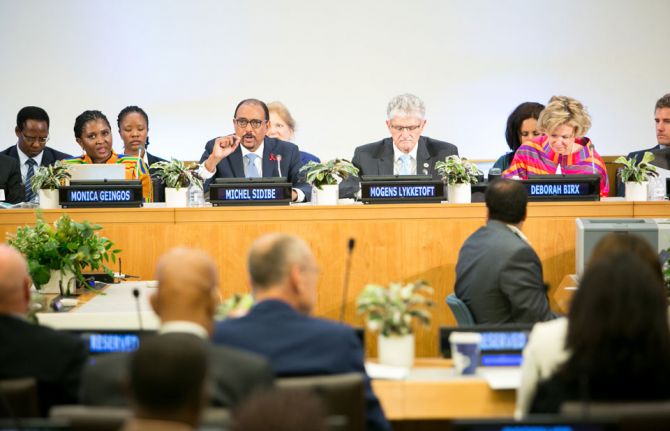
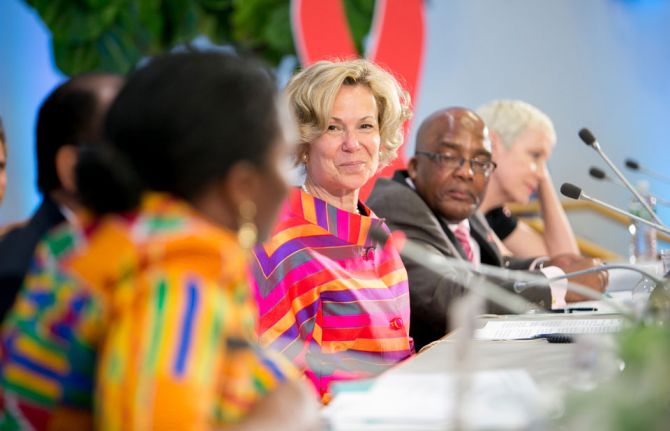


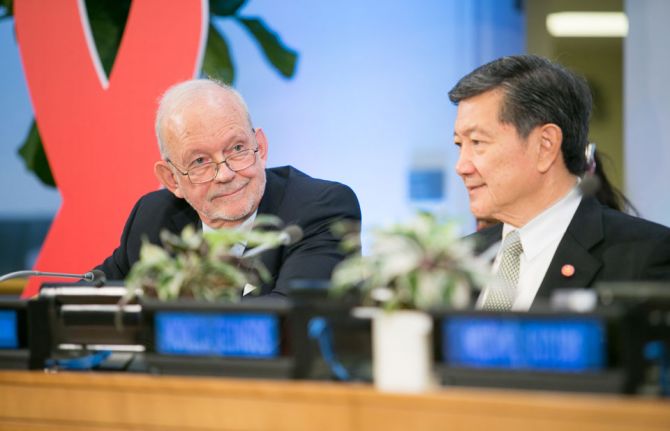
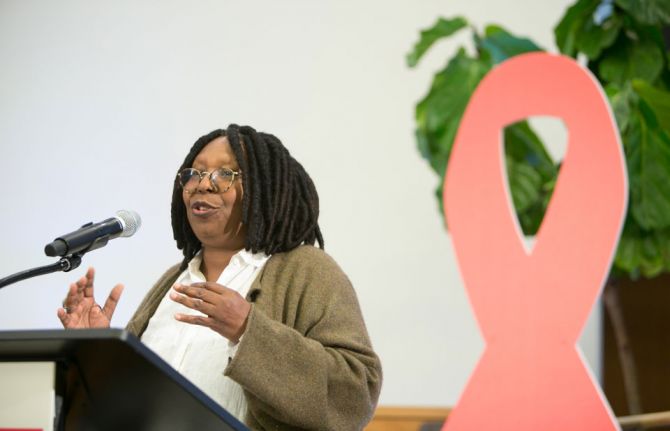
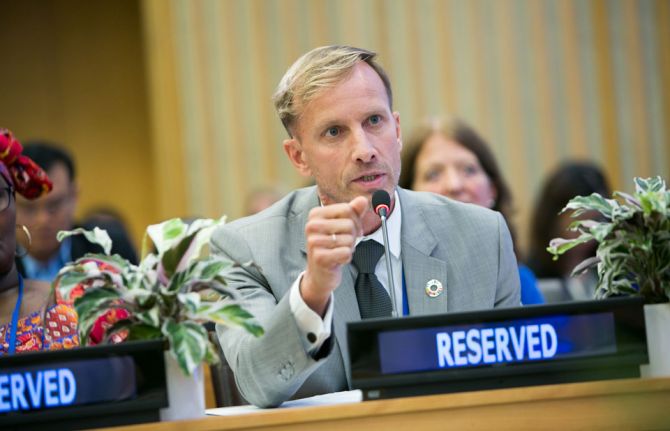

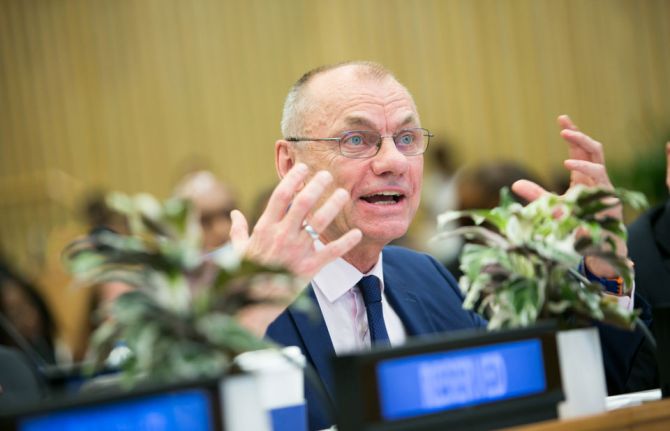
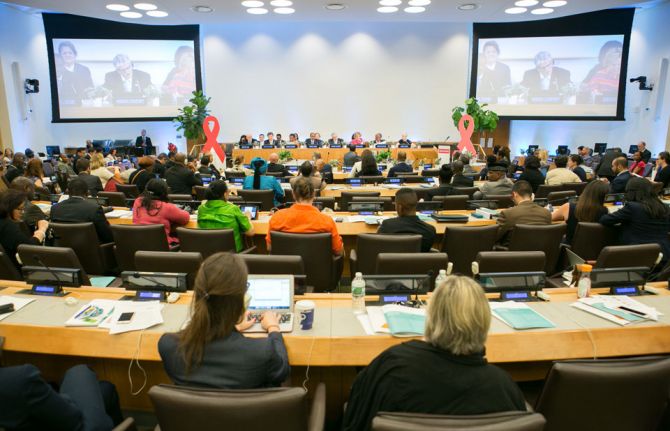
Press Release
UNAIDS and PEPFAR announce dramatic reductions in new HIV infections among children in the 21 countries most affected by HIV in Africa
08 June 2016 08 June 2016Concerted global efforts have led to a 60% drop in new infections among children, which has averted 1.2 million new HIV infections among children in 21 priority countries since 2009
NEW YORK/GENEVA, 8 June 2016—UNAIDS and the United States President’s Emergency Plan for AIDS Relief (PEPFAR) announced today that there has been a 60% decline in new HIV infections among children since 2009 in the 21 countries in sub-Saharan Africa that have been most affected by the epidemic.
New HIV infections among children in the 21 countries dropped from 270 000 [230 000–330 000] in 2009 to 110 000 [78 000–150 000] in 2015. Equally impressive are gains made in bridging the treatment gap among children. In 2005, fewer than one in 10 children had access to antiretroviral treatment—this gap has now been reduced to one in two. In the past five years alone, treatment scale-up for children grew twofold. The impact is that AIDS-related deaths among children were reduced by 44%.
“These astounding results show that the world is on the Fast-Track to eliminating new HIV infections among children and ensuring that their mothers are alive and healthy,” said UNAIDS Executive Director Michel Sidibé. “It’s beautiful to know that we could soon have a new generation free from HIV.”
The results were published in a new report, On the Fast-Track to an AIDS-free generation, which was launched at an event hosted by UNAIDS and PEPFAR on the opening day of the United Nations General Assembly High-Level Meeting on Ending AIDS, taking place in New York, United States of America, from 8 to 10 June.
“This shows what is possible through the combined power of science, communities and focused action,” said Deborah Birx, United States Global AIDS Coordinator and Special Representative for Global Health Diplomacy. “PEPFAR is building on this success, driving harder and smarter to prevent HIV infections and end AIDS among children, adolescents and young women through our DREAMS Partnership, Accelerating Children’s HIV/AIDS Treatment initiative and other efforts.”
During the event, UNAIDS also released global data for children that showed that new HIV infections among children have declined globally by 50% since 2010—down from 290 000 in 2010 to 150 000 in 2015. It also showed that 49% of children living with HIV around the world now have access to life-saving treatment. On the eve of the event, UNAIDS and partners announced that Armenia, Belarus and Thailand have joined Cuba in receiving official certificates of validation from the World Health Organization for eliminating new HIV infections among children. Thailand is the first country with a major HIV epidemic (450 000 people living with HIV in 2014) to receive such a validation.
It was during the High-Level Meeting on HIV and AIDS in 2011 that UNAIDS and PEPFAR joined with partners to launch the Global Plan towards the elimination new HIV infections among children by 2015 and keeping their mothers alive (Global Plan). The focus of the Global Plan was to increase efforts to prevent new HIV infections in all countries, but particularly in the 22 countries that, in 2009, accounted for 90% of pregnant women living with HIV.
The new report released today shows the progress made since the Global Plan was launched. It outlines that seven countries have reduced new HIV infections among children by more than 70% since 2009 (the baseline for the Global Plan), including: Uganda, by 86%; South Africa and Burundi, by 84%; Swaziland, by 80%; Namibia, by 79%; Mozambique, by 75%; and Malawi, by 71%. In Nigeria, however, the decline was much smaller, at just 21%. In India, the only Global Plan country outside of sub-Saharan Africa, new HIV infections in children dropped by 44% and coverage of services to pregnant women increased from less than 4% in 2010 to 31% in 2015.
The new report demonstrates that treatment or prophylaxis (excluding the less-effective single-dose nevirapine) coverage for pregnant women living with HIV in the countries most affected by the epidemic increased dramatically from 2009. By 2015, more than 80% of pregnant women living with HIV in the 21 countries in sub-Saharan Africa had access to medicines to prevent transmission of the virus to their child—up from just 36% (excluding the less-effective single-dose nevirapine) in 2009.
The World Health Organization recommends that all pregnant women living with HIV should be offered lifelong HIV treatment, extending beyond Option B+ to include all women diagnosed with HIV regardless of pregnancy. By 2015, all of the Global Plan countries, with the exception of Nigeria, were routinely offering lifelong HIV treatment to all pregnant women living with HIV. The massive scale-up of treatment has helped to reduce AIDS-related deaths among women of reproductive age, which declined by 43% between 2009 and 2015.
Incredible journey
Six countries—Botswana, Mozambique, Namibia, South Africa, Swaziland and Uganda—met the Global Plan goal of ensuring that 90% or more of pregnant women living with HIV had access to life-saving antiretroviral medicines. Six additional countries provided antiretroviral medicines to more than 80% of pregnant women living with HIV—Burundi, Cameroon, Malawi, the United Republic of Tanzania, Zambia and Zimbabwe.
Major successes have also been seen in increasing access to treatment for children living with HIV in the 21 countries: access has increased more than threefold since 2009—from 15% in 2009 to 51% in 2015. However, this is still only half of all children in need of treatment. Major efforts are required to ensure that all children born to HIV-positive mothers are tested for HIV within the first two months of life. Without immediate access to treatment, around 30% of children living with HIV will die within the first year of life and more than 50% will die before they reach their fifth birthday.
The Global Plan also aspired to reduce new HIV infections among women of reproductive age by 50%. The actual decline was just 5%—well below the target. This suggests that women, including young women, continue to be left behind and are not being reached with HIV prevention services. Between 2009 and 2015, around 4.5 million [3.8 million–5.4 million] women became newly infected with HIV in the 21 priority countries in sub-Saharan Africa, and AIDS-related illnesses remain the leading cause of death among adolescents on the continent.
At the launch of the report, UNAIDS, PEPFAR and partners also launched a Super Fast-Track framework for ending AIDS among children, adolescents and young women—Start Free, Stay Free, AIDS-Free. The initiative will build on the progress already made to Fast-Track action to end the AIDS epidemic and sets ambitious targets to eliminate new infections among children, find and ensure access to treatment for all children living with HIV and prevent new HIV infections among adolescents and young women. Together, these steps will put the world on a path to ending AIDS among children.
UNAIDS
The Joint United Nations Programme on HIV/AIDS (UNAIDS) leads and inspires the world to achieve its shared vision of zero new HIV infections, zero discrimination and zero AIDS-related deaths. UNAIDS unites the efforts of 11 UN organizations—UNHCR, UNICEF, WFP, UNDP, UNFPA, UNODC, UN Women, ILO, UNESCO, WHO and the World Bank—and works closely with global and national partners towards ending the AIDS epidemic by 2030 as part of the Sustainable Development Goals. Learn more at unaids.org and connect with us on Facebook, Twitter, Instagram and YouTube.
PEPFAR
The United States President’s Emergency Plan for AIDS Relief (PEPFAR) is the United States Government initiative to save the lives of those affected by HIV/AIDS around the world. This historic commitment is the largest by any nation to combat a single disease internationally, and PEPFAR investments also help alleviate suffering from other diseases across the global health spectrum. PEPFAR is driven by a shared responsibility among donor and partner nations and others to make smart investments to save lives. Learn more at pepfar.gov and connect with us on Facebook and Twitter.
Contact
UNAIDSSophie Barton-Knott
tel. +41 22 791 1697
bartonknotts@unaids.org
PEPFAR
David Haroz
tel. +1 202 445 3269
harozd@state.gov
Press centre
Download the printable version (PDF)

Press Release
WHO validates elimination of mother-to-child transmission of HIV and syphilis in Armenia, Belarus and the Republic of Moldova
07 June 2016 07 June 2016COPENHAGEN/GENEVA/ISTANBUL, 7 June 2016—United Nations agencies congratulate Belarus for eliminating mother-to-child transmission of both HIV and syphilis and Armenia and the Republic of Moldova for eliminating mother-to-child transmission of HIV and syphilis, respectively. During a ceremony in New York City, elimination validation certificates were presented to the ministers of health of the three European countries, who were attending the United Nations General Assembly High-level Meeting on Ending AIDS.
“To ensure children are born healthy is to give them the best possible start in life. It is immensely encouraging to see countries succeed in eliminating mother-to-child transmission of these two diseases,” said WHO Director-General Dr Margaret Chan. “This is a tremendous achievement – a clear signal to other countries that elimination is possible and that the world is on the way to an AIDS-free generation.” Ending the epidemics of AIDS by 2030 is a key target of the Sustainable Development Goal on health and well-being.
“Every child growing up free from HIV thanks to antiretroviral medicines is a testimony to the progress the world is making in eliminating mother-to-child transmission of HIV," said UNAIDS Executive Director Michel Sidibé. “As we meet in New York at the High-level Meeting on Ending AIDS to plan the next, crucial phase of the response to HIV, we will draw upon the successes of these countries to highlight the extraordinary achievements that can be made through the rapid expansion of access to life-saving treatment.”
Achievements in Armenia, Belarus and the Republic of Moldova
The World Health Organization (WHO) has been working in Armenia, Belarus and the Republic of Moldova since 2010 with the Joint United Nations Programme on HIV/AIDS (UNAIDS), the United Nations Children's Fund (UNICEF) and the United Nations Population Fund (UNFPA) to eliminate mother-to-child transmission of HIV and syphilis.
“This is a success for these countries and a celebration for children and families. We expect that these achievements will inspire many other European countries to seek validation that they have ended mother-to-child transmission of HIV and syphilis,” added Dr Zsuzsanna Jakab, WHO Regional Director for Europe. “It is only by ensuring truly universal access to HIV and syphilis prevention, treatment and care for all, while respecting individual rights, that the HIV and syphilis epidemics in children will be eliminated.”
“After two decades of intensive efforts in the Region, we now have validated proof that it is possible to realize the right of all children to be born HIV-free. As we move forward, it is important that children have equitable access to services that can help them thrive and develop in a supportive family environment, with their mothers alive and nurturing their well-being,” said Marie-Pierre Poirier, UNICEF Regional Director for Europe and Central Asia.
Depending on the progress of national efforts, countries may choose validation of the elimination of mother-to-child transmission of HIV, syphilis or both. Armenia, Belarus and the Republic of Moldova have worked to ensure early universal access to free services for antenatal care, HIV and syphilis testing for pregnant women and their partners, treatment for women who test positive, early diagnosis in infants, free infant formula and community engagement. These services are provided as part of an equitable, accessible, universal health system in which maternal and child health programmes are integrated with programmes for HIV and sexually transmitted infections.
“The remarkable achievements of these countries in eliminating HIV and syphilis transmission to infants underscore the importance of robust maternal health services,” according to Dr Babatunde Osotimehin, Executive Director, UNFPA. “Only by offering pregnant women integrated HIV and syphilis care as part of a rights-based, comprehensive package of sexual and reproductive health services, including family planning, can we truly keep the mother–baby pair alive and thriving.” The validation process for the three countries was conducted by WHO in collaboration with UNAIDS, UNICEF and UNFPA.
Europe’s progress in reducing mother-to-child transmission of HIV and syphilis
The reduction in the number of new cases of HIV and congenital syphilis infections among children is one of Europe’s successes in its response to HIV and sexually transmitted infections in the past few years. Mother-to-child transmission accounted for just 1% of new cases of HIV infection reported in 2014 in the WHO European Region.
Ensuring that pregnant women living with HIV and their children have access to antiretroviral therapy lowers the risk of mother-to-child transmission of HIV from up to 45% to 1%. Up to 95% of HIV-infected pregnant women receive antiretroviral therapy in Europe – the highest percentage globally, and more than 70% of infants of HIV-positive women were tested within two months of birth.
Screening and treatment during pregnancy are essential to prevent mother-to-child transmission of syphilis, which can cause miscarriage, stillbirth or neonatal death in up to 80% of cases. Over 60% of European countries offer syphilis testing to pregnant women, and all countries in the Region offer free treatment to syphilis-infected pregnant women.
WHO support to European countries
WHO has been supporting European countries in eliminating mother-to-child transmission by providing guidance on the use of antiretroviral drugs and on validation criteria and processes of elimination of mother-to-child transmission of HIV and syphilis.
Two regional consultations in 2015 reviewed progress, addressed the remaining challenges and recommended actions to accelerate efforts towards elimination of mother-to-child transmission of HIV and syphilis as well as validation of their elimination.
Through a new action plan on HIV response, WHO will continue to support countries in the WHO European Region in their efforts to eliminate mother-to-child transmission of HIV and syphilis by 2030.
Notes to editors
- As treatment for prevention of mother-to-child-transmission is not 100% effective, elimination of transmission is defined as a reduction in transmission to such a low level that it no longer constitutes a public health problem.
- The term “validation” is used to attest that a country has successfully met the criteria for eliminating mother-to-child transmission of HIV and/or syphilis at a specific time; countries are required to maintain ongoing programmes.
Links
- Consolidated guidelines on the use of antiretroviral drugs for treating and preventing HIV infection http://www.who.int/hiv/pub/guidelines/arv2013/en/
- Guidance on global processes and criteria for validation of elimination of mother-to-child transmission of HIV and syphilis http://www.who.int/reproductivehealth/publications/rtis/9789241505888/en/
- Methods for surveillance and monitoring of congenital syphilis elimination within existing systems http://www.who.int/reproductivehealth/publications/rtis/9789241503020/en/
- The global elimination of congenital syphilis: rationale and strategy for action http://www.who.int/reproductivehealth/publications/rtis/9789241595858/en/
- WHO/Europe HIV http://www.euro.who.int/en/health-topics/communicable-diseases/hivaids
- WHO/Headquarters HIV http://www.who.int/hiv/en
- UNAIDS http://www.unaids.org/en/
- UNICEF HIV http://www.unicef.org/aids/
- UNFPA http://eeca.unfpa.org
UNAIDS
The Joint United Nations Programme on HIV/AIDS (UNAIDS) leads and inspires the world to achieve its shared vision of zero new HIV infections, zero discrimination and zero AIDS-related deaths. UNAIDS unites the efforts of 11 UN organizations—UNHCR, UNICEF, WFP, UNDP, UNFPA, UNODC, UN Women, ILO, UNESCO, WHO and the World Bank—and works closely with global and national partners towards ending the AIDS epidemic by 2030 as part of the Sustainable Development Goals. Learn more at unaids.org and connect with us on Facebook, Twitter, Instagram and YouTube.
Contact
Cristiana Salvitel. +45 29 63 42 18
salvic@who.int
Siff Malue Nielsen
tel. +45 4533 69 91
nielsensm@who.int
WHO headquarters
Christian Lindmeier
tel. +41 79 500 6552
lindmeierch@who.int
WHO headquarters
Pru Smith
tel. +41 79 477 1744
smithp@who.int
UNAIDS
Sophie Barton-Knott
tel. +41 79 514 6896
bartonknotts@unaids.org
UNAIDS
Snizhana Kolomiiets
tel. +79161079416
kolomiietss@unaids.org
UNICEF
Kristen Elsby
tel. +41 79 938 8273
kelsby@unicef.org
UNFPA
Jens-Hagen Eschenbaecher
tel. +90 549 748 36 55
eschenbaecher@unfpa.org
UNFPA
Omar Gharzeddine
tel. +1 917 912 5957
gharzeddine@unfpa.org
Press centre
Download the printable version (PDF)

Press Release
Thailand is first country in Asia to eliminate mother-to-child transmission of HIV and syphilis
07 June 2016 07 June 2016NEW DELHI/BANGKOK, 7 June 2016— Thailand today received validation from WHO for having eliminated mother-to-child transmission of HIV and syphilis, becoming the first country in Asia and the Pacific region and also the first with a large HIV epidemic to ensure an AIDS-free generation. The Minister of Health of Thailand was presented with the certificate of validation during a ceremony which took place in New York on the eve of the United Nations General-Assembly High-Level Meeting on Ending AIDS.
“This is a remarkable achievement for a country where thousands of people live with HIV. Thailand’s unwavering commitment to core public health principles has made elimination of mother-to-child transmission of HIV and syphilis a reality, a critical step for rolling back the HIV epidemic. Thailand has demonstrated to the world that HIV can be defeated,” Dr Poonam Khetrapal Singh, Regional Director, WHO South-East Asia Region, said presenting the certificate of validation to Thailand in New York.
"Thailand has turned around its epidemic and transformed the lives of thousands of women and children affected by HIV," said UNAIDS Executive Director, Michel Sidibé. "Thailand's progress shows how much can be achieved when science and medicine are underpinned by sustained political commitment."
"By investing in strong maternal and child health care and national AIDS prevention measures, Thailand has demonstrated there are ways to protect children from the global AIDS pandemic response,” said Karin Hulshof, Regional Director, UNICEF East Asia-Pacific Region. “Thailand’s achievement inspires its neighbours to greater action. There are still 21,000 infants who are born with HIV each year in the Asia-Pacific region, and more than 200,000 children who are growing up with HIV.”
Untreated, women living with HIV have a 15-45% chance of transmitting the virus to their children during pregnancy, labour, delivery or breastfeeding. However, that risk drops to just over 1% if antiretroviral medicines are given to both mothers and children throughout the stages when infection can occur.
According to Thailand’s Ministry of Public Health 98% of all pregnant women living with HIV have access to antiretroviral therapy and the rate of mother-to-child transmission of HIV has been reduced to less than 2%. In 2000, an estimated 1000 children became infected with HIV. In 2015, the number of children who became infected with HIV through mother to child transmission was reduced to 85, a decline of more than 90%, a significant achievement in a country where an estimated 450 000 people were living with HIV in 2014.
At the same time, sustained efforts and success in preventing new HIV infections have helped reduce HIV among women of childbearing age. According to Thailand’s health authorities, between 2000 and 2014, the annual number of women newly infected with HIV fell from 15 000 to 1 900 – a 87% reduction. Thailand’s Universal Health Coverage framework ensured essential health services were available to both rich and poor. The country’s commitment to equitable access has ensured that both Thai citizens and migrants are covered for HIV treatment.
Thailand’s commitment to the UNAIDS-led ‘Global Plan towards the elimination of new HIV Infections among children by 2015 and keeping their mothers alive’, combined with the Government’s decision to provide all pregnant women – including documented and undocumented migrant workers – free antenatal care, delivery and services for HIV and syphilis pushed treatment coverage rates up, culminating in validation of elimination of mother-to-child transmission.
Thailand’s pioneering success and leadership demonstrates how countries can make real change when good policy is followed up with high-level commitment. WHO, UNAIDS and UNICEF will continue to work with other countries in the region, along with partners to replicate Thailand’s success.
WHO validation process
In 2014, WHO and key partners published the guidance on global processes and criteria for the validation of the elimination of mother-to-child transmission of HIV and syphilis, which outlines the validation process and the different indicators countries need to meet.
As treatment for prevention of mother-to-child-transmission is not 100% effective, elimination of transmission is defined as a reduction of transmission to such a low level that it no longer constitutes a public health problem.
An international expert mission convened by WHO visited Thailand in April 2016 to validate the progress toward the elimination of mother-to-child transmission of HIV and syphilis. The members visited health centres, laboratories, and government offices, and interviewed health officials and other key actors. The mission included experts from Australia, Cambodia, China, Philippines, India, Indonesia, Nepal, Thailand, United States and representatives from WHO, UNICEF and UNAIDS.
Video on Thailand's success: https://www.youtube.com/watch?v=eVIh3pnnOh4&feature=youtu.be
UNAIDS
The Joint United Nations Programme on HIV/AIDS (UNAIDS) leads and inspires the world to achieve its shared vision of zero new HIV infections, zero discrimination and zero AIDS-related deaths. UNAIDS unites the efforts of 11 UN organizations—UNHCR, UNICEF, WFP, UNDP, UNFPA, UNODC, UN Women, ILO, UNESCO, WHO and the World Bank—and works closely with global and national partners towards ending the AIDS epidemic by 2030 as part of the Sustainable Development Goals. Learn more at unaids.org and connect with us on Facebook, Twitter, Instagram and YouTube.
Contact
WHO South-East Asia Regional Office, New DelhiShamila Sharma
tel. +91 981 828 7256
sharmasha@who.int
UNAIDS Global
Sophie Barton-Knott
tel. +41 79 514 68 96
bartonknotts@unaids.org
UNAIDS RST in Bangkok
Saya Oka
tel. +66 81 835 3476
okas@unaids.org
UNICEF Thailand
Alistair Gretarsson
tel. +66 2 356 9481 +66 92 256 2418
agretarsson@unicef.org
Press centre
Download the printable version (PDF)
